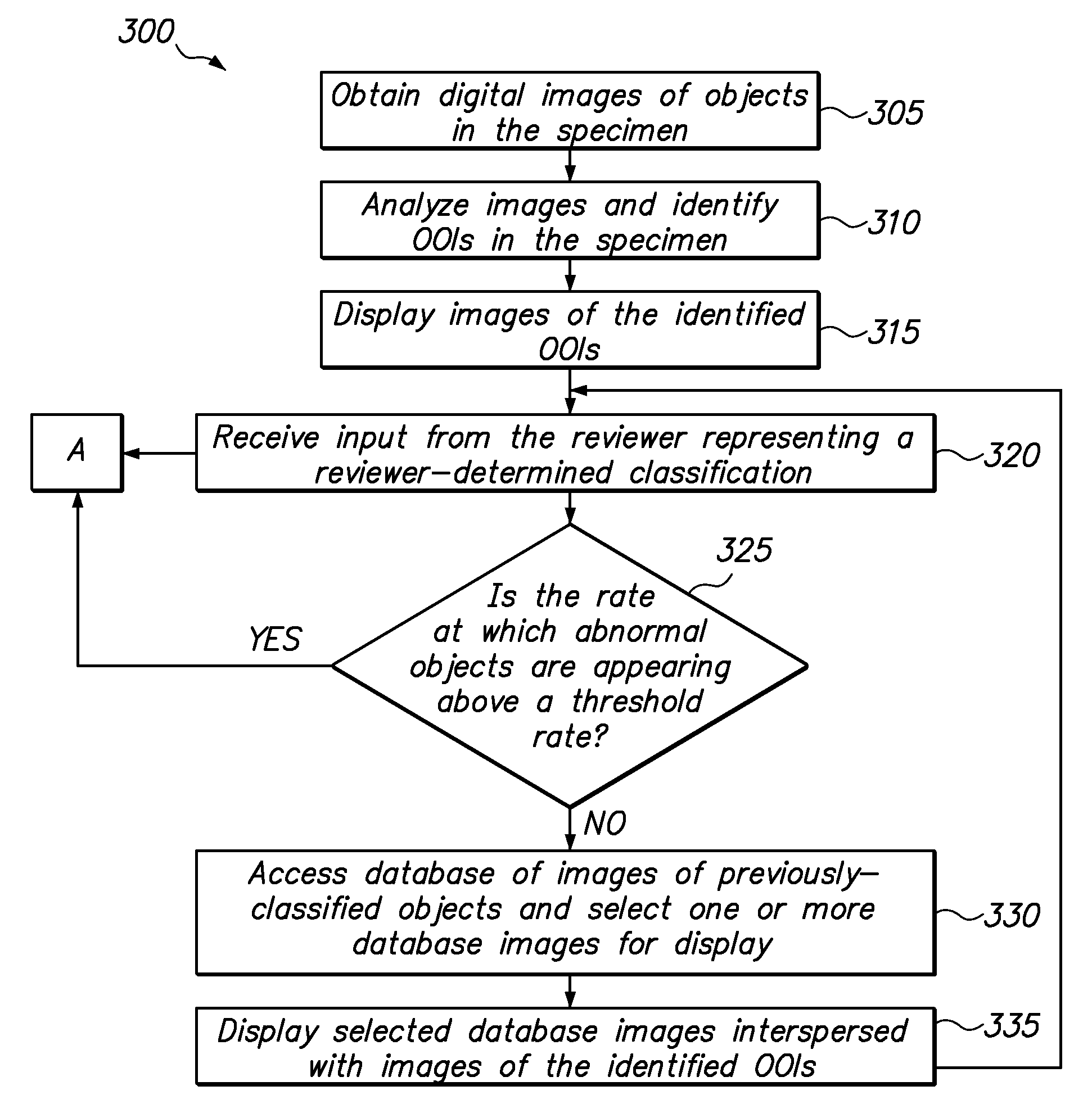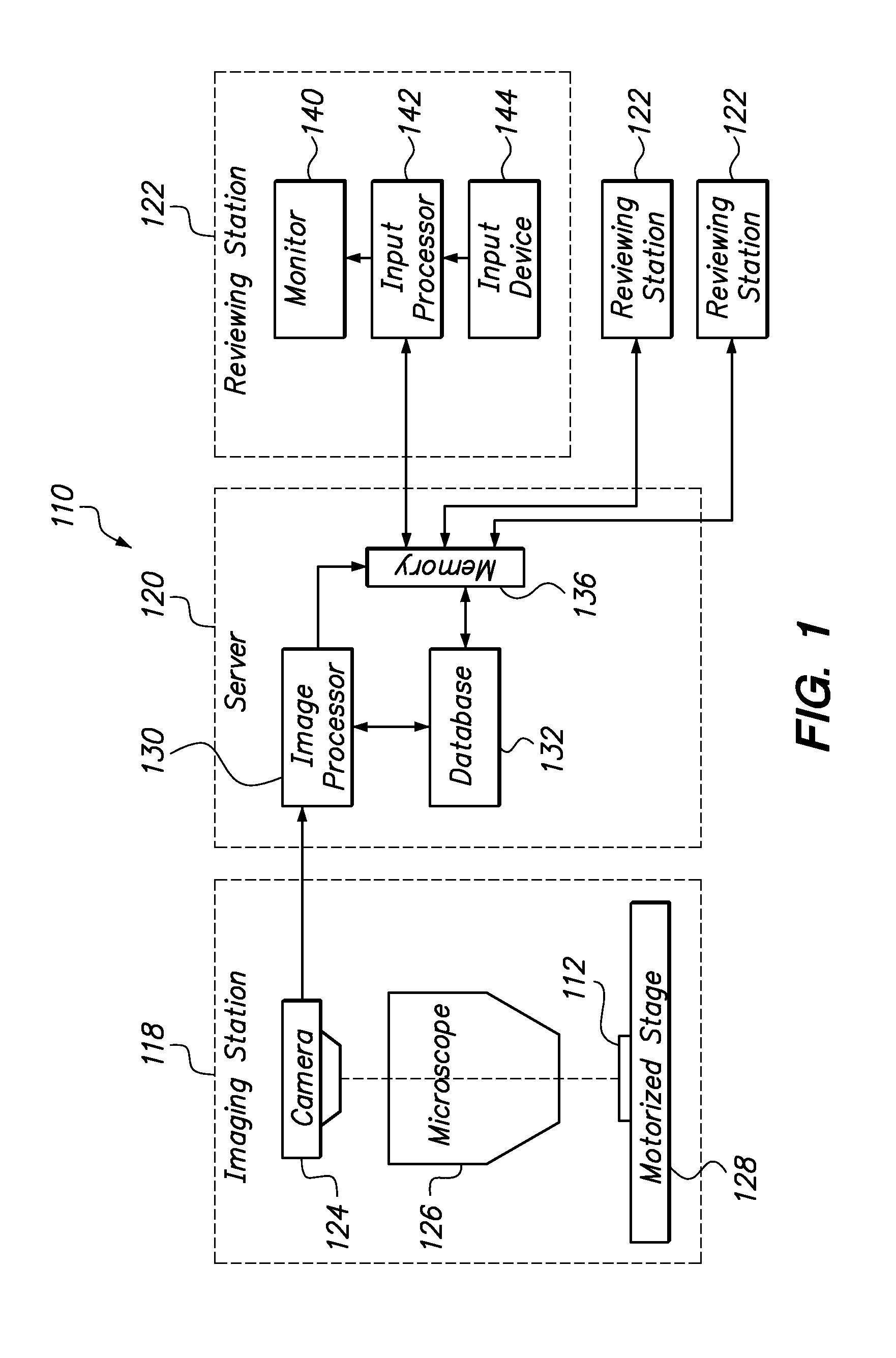Method for automatically seeding previously-classified images among images of objects of interest from a specimen
a technology of automatic seeding and specimens, applied in the field of systems and methods for characterizing or classifying biological specimens, can solve the problems of increasing the difficulty of maintaining, monitoring and measuring the diligence of cytotechnologist during cytological slide examination, and the death of one-third of the 15,000 women diagnosed with cervical cancer annually
- Summary
- Abstract
- Description
- Claims
- Application Information
AI Technical Summary
Benefits of technology
Problems solved by technology
Method used
Image
Examples
Embodiment Construction
[0031]Referring to FIG. 1, a biological screening system 110 constructed in accordance with the present invention is described. The system 110 is configured to process a series of microscope slides 112 in order to assist a reviewer, or cytotechnologist, in classifying a biological specimen 114 (shown in FIG. 2) disposed on the slide 112. The system 110 is further configured for automatically seeding images of previously-classified objects into the workflow of the reviewer such that the seeded images are indistinguishable from the specimen images.
[0032]With conventional classification systems and methods, it is difficult to measure the accuracy of slide classifications as a function of cytotechnologist because of the low prevalence of abnormal cells. Seeding digital images of previously-classified objects into the workflow of a cytotechnologist in accordance with the present invention is advantageous over conventional classification methods because such seeding facilitates accuracy q...
PUM
 Login to View More
Login to View More Abstract
Description
Claims
Application Information
 Login to View More
Login to View More - R&D
- Intellectual Property
- Life Sciences
- Materials
- Tech Scout
- Unparalleled Data Quality
- Higher Quality Content
- 60% Fewer Hallucinations
Browse by: Latest US Patents, China's latest patents, Technical Efficacy Thesaurus, Application Domain, Technology Topic, Popular Technical Reports.
© 2025 PatSnap. All rights reserved.Legal|Privacy policy|Modern Slavery Act Transparency Statement|Sitemap|About US| Contact US: help@patsnap.com



